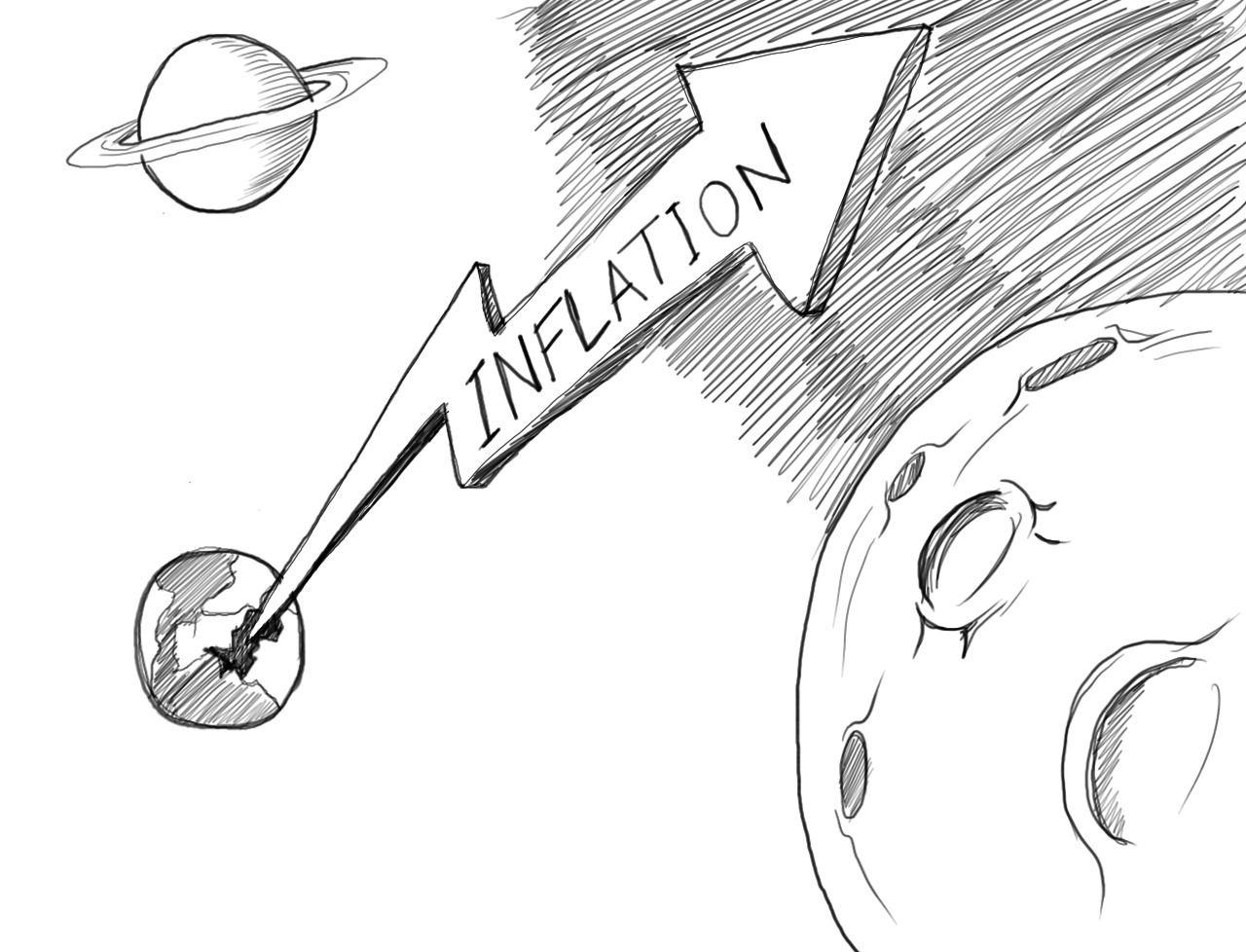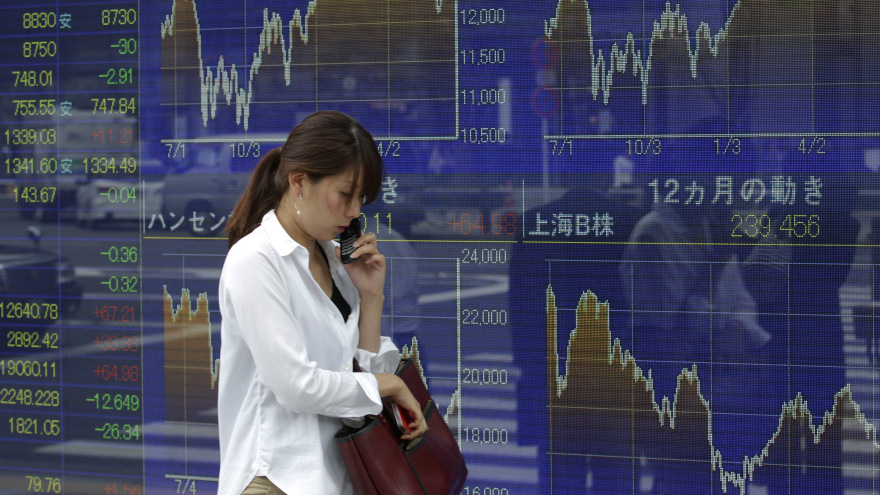 Vivek Kaul
Vivek Kaul
There are good times. There are bad times. And there are bad times which don’t seem like bad times, at least to some people. Central bank governors all over the world live in bad times which don’t seem like bad times to them.
In the last few years, central banks of United States, Great Britain, Euro Zone, China, Switzerland and now Japan, have printed tremendous amount of money. “So far, five central banks, – the Federal Reserve, the European Central Bank, Bank of England, the Bank of Japan and the Swiss National Bank have effectively created more than $6-trillion of new currency over the past four years, and have flooded the world money markets with excess liquidity. The size of their balance sheets has now reached a combined $9.5-trillion, compared with $3.5-trillion six years ago,” writes investment newsletter writer Gary Dorsch.
This has been done with the hope that pushing all this new money into the financial system will ensure that interest rates continue to remain low. Low interest rates would make the citizens of their respective countries borrow and spend more more. And at the same time banks and financial institutions would also be happy to lend more, given that there is so much more money going around. This will help businesses and the overall economy.
There was also the hope that all this new money would create some inflation as it chases the same amount of goods and services, leading to a rise in prices. When people see prices rising, or expect prices to rise, they are more likely to buy goods and services, than keep their money in the bank. That was the logic. And when that happened businesses would do well and so would the overall economy. But that hasn’t happened.
So central banks have gone ahead and printed even more in the ‘hope’ that people borrow and spend and some inflation is created. The fact that all this new money floating around hasn’t led to a high inflation has been used as a justification for printing even more money in the hope of creating some inflation. That’s the most harebrained logic that one can ever come across.
The fact that doing something (i.e. money printing) that should have resulted in something else (i.e. some inflation), but is not resulting in that something else (i.e. inflation), is being used to justify doing more of that something (i.e. money printing).
Also central banks, their governors and their respective governments have suggested time and again that all the money printing will lead to only some inflation, which they will be able to manage and not very high inflation that will go beyond their control.
It has also been suggested in recent times that very high inflation scenarios don’t just occur because of excessive money printing but there are other reasons to it as well. One theory which has gained popularity in recent times is that high inflation happens when there are supply shocks.
Lets take the case of German hyperinflation of 1923 where inflation reached a peak of 1000 million % a year and which remains the most discussed case of the twentieth century.
James Montier writing in a research paper titled Hyperinflations, Hysteria, and False Memories points out “Germany’s productive capacity had been significantly damaged by World War I, both in terms of the losses inflicted and the resources redirected to military use. Allied troops occupied the Ruhr Valley – the seat of much of Germany’s manufacturing base. These events clearly constituted a large supply shock.”
So basically what Montier suggests is that Germany was not producing enough goods to meet the needs of its citizens. It was also not in a position to import given that it did not have the money (or gold as it was in those days) to pay for the imports. And as there were not enough goods going around that led to high inflation.
Fair point. But this doesn’t necessarily mean that the excessive money printing wasn’t responsible for high prices that prevailed. The price of basic necessities went through the roof. A kilo of butter cost 250 billion marks and a kilo of bacon 180 billion marks.
The German government had been printing an excessive amount of money to finance its expenditure. It did not earn enough revenue to meet its expenditure. In 1922 a trillion marks were printed as the deficit shot through the roof. In the first six months of 1923, nearly 17 trillion marks were printed. With such an astonishing amount of money being printed, money started to lose its value dramatically. By August 1923, one dollar was worth 620,000 marks(the German currency) and by early November was worth 620 billion marks.
As the currency lost value, the government had to keep printing more of it, to meet its expenditure. So the more money the government printed, the more it lost value, and in turn, the government had to print even more money.
The industry which thrived during this period was the money printing industry. Thirty paper mills and 133 printing plants were working, but still could not turn out enough money required to keep up given the huge denominations they had reached.
So yes, a supply shock was responsible for an increase in prices, but so was money printing. And Germany was not the only country that went through this. There were other countries that went through a similar scenario which had supply shocks and printed an excessive amount of money also.
As Forrest Capie writes in a research paper titled Conditions in which very rapid inflation has appeared “Austria, Germany, Hungary, and Poland all had substantial and growing deficits built up prior to or coincidental with the inflation.” Austria, Hungary and Poland had peak inflation rates of 4 million %, 14,000% and 23,000%. So a supply shock would have definitely added to inflation but that does not mean that all the new money being printed and put into the financial system had no role in creating inflation.
Lets take the case of China in the late 1930s and 1940s. Japan invaded China in 1937 and occupied around one third of the country which included much of its eastern part. This meant that China no longer had access to taxes from the part under occupation of Japan. Also once this conflict ended, a civil war started in China. Hence, there was a prolonged supply shock. And this Montier argues led to very high inflation. Again this argument just covers one side of the picture.
Inflation in China at its peak crossed 50% per month. As Capie writes “There were clearly a long and accelerating inflation through these years with prices rising first by 27 per cent then 68 per cent, then more than doubling and so on until in 1947 monthly rates in excess of 50 per cent were reached.”
But was it only because of a supply shock? In 1936-37, the Chinese government revenue was equal to its expenditure. The situation changed in the years to come as war expenditure went through the roof. “When the Japanese attacked, the leader of the Nationalist Government pledged total war without regard to cost, and in the next few years no attempt was made to match increased expenditure with increased revenues,” writes Capie. By 1948, the government was spending more than twice of what it was earning. The difference being made up through printing money.
As soon as the war with Japan ended, a civil war broke out in China. And each of the factions engaged in civil war produced its own money. “Between 1937 and 1949, three governments – the Nationalists, the Japanese, and the Communists – occupied China. Each one issued its own currency (indeed, multiple currencies were issued by each authority). These bodies effectively engaged in monetary warfare, with each producing “propaganda stating that the currency of their enemies was falling rapidly in value,” writes Moniter.
In fact, money supply expanded by 700% between 1946 and 1947. And this also added to an increase in prices other than the supply shock. As Capie writes “Over the whole period of war, the money supply grew by 15,000 per cent, wholesale prices rose by over 100,000 per cent…The vastly increased note issue of the Central Bank of China lay behind the huge expansion in the money supply.”
So an increase in money supply remains an important reason behind high inflationary scenarios, there is no denying that.
Another reason often offered to argue that there will be no high inflation in countries that are currently printing money is that high inflation is an economic curse that only developing countries face. The example that is often given is that of Zimbabwe.
Between August 2007 and June 2008, the money supply in Zimbabwe went up 20 million times. With the money supply increasing by such a huge amount, inflation went through the roof. In early 2008, consumer price inflation was said to be at 2 million percent. By the end of the year it had sped to around 230 million percent.
It is argued that United States, United Kingdom, the Euzo Zone and Japan are no Zimbabwe. Of course that is true. But people who argue along these lines are victims of what we can call the black swan syndrome. Till the first Europeans landed in Australia it was thought that all swans are white. Only when they landed in Australia did they realise that swans could be black too.
Just because high inflation has happened in Zimbabwe, a developing country, in the recent past, it cannot be argued that high inflation cannot plague developed countries as well. In fact, the high inflation that prevailed in Israel in the 1970s and the 1980s is an excellent example of how high inflation can occur even in a reasonably developed country.
As Albert Edwards of Societe Generale writes in a research report titled Nikkei 63,000,000? A cheap way to buy Japanese inflation risk “Think about that for a moment. Japan is an advanced economy, a developed democracy and certainly no Zimbabwe. But Israel was all of those things too. It simply found itself politically committed to a level of expenditure – military and social – which it couldn’t fund. Instead of taking the politically unpalatable course of cutting that expenditure, it resorted to the tried and-tested tactic of buying time with printed money. Between 1972 and 1987 Israel’s CPI rose by a factor of nearly 10,000. Inflation averaged around 84% and peaked at an annualised 500% in early 1985.”
Like Israel, countries in the developed world where countries have found themselves politically committed to a level of expenditure that they cannot meet through their earnings and have been printing money in order to meet it. Just because this hasn’t led to high inflation till now is no basis for arguing that it won’t lead to inflation in the future as well.
Given the inevitability of high inflation, gold as a form of investment still remains very relevant despite the recent fall in prices. Having said that one shouldn’t be betting one’s life on it, given that it is difficult to predict when this will happen. As James Rickards the author of Currency Wars and a Partner in Tangent Capital Partners, a merchant bank based in New York, recently told The Real Asset Report “I recommend an allocation to gold from investable assets of 10% for the conservative investor and 20% for the more aggressive investor.”
The article originally appeared on www.firstpost.com on April12, 2013
(Vivek Kaul is a writer. He tweets @kaul_vivek)


